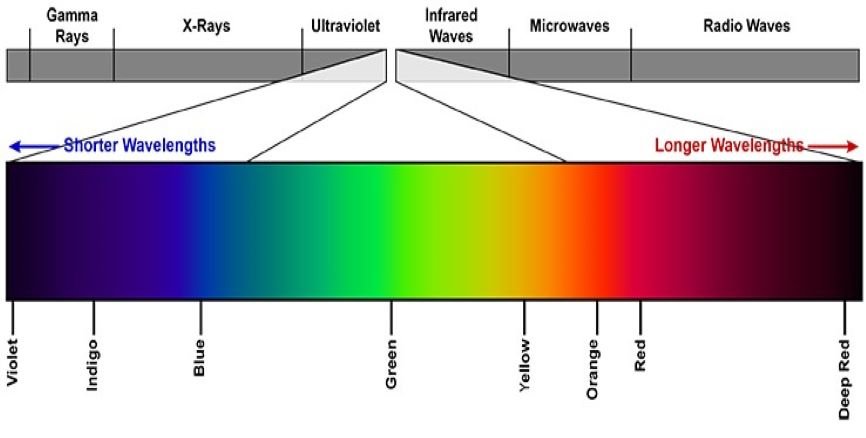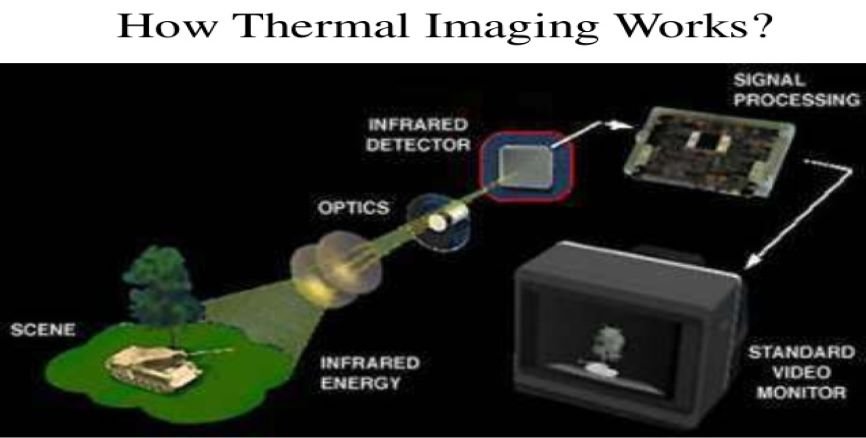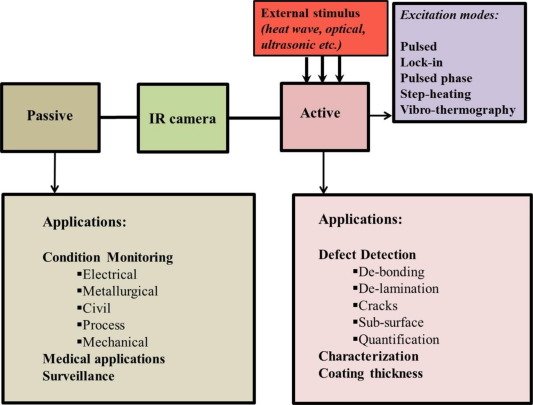Our human eye can see visible light or a small part of the electromagnetic spectrum. The human eye cannot see any types of radiation like ultraviolet light or infrared light. Infrared energy is just one part of the electromagnetic spectrum that encompasses radiation from x-rays, gamma rays, ultraviolet, and a thin region of visible light, radio waves infrared, and microwaves. With the help of the thermographic camera, we can determine the temperature of an object, infrared radiation is used. So today we will know about Thermal imaging or Thermographic camera.

What is Thermography?
Infrared thermography technique uses infrared imaging to detect, display thermal patterns and temperature across the surface of an object. Thermography can be applied to any situation where any type of thermal temperature will provide meaning data about a system or object. It is the types of equipment which sense infrared radiation by converting it into temperature and displays an image of temperature distribution.
How Does Thermal Imaging Work?
The main function of Thermal cameras is to detect the temperature by recognizing and capturing different levels of infrared light. This type of light is invisible that our naked eye can’t see, but can be felt as heat if the intensity is high enough.
Almost all object except some kind of infrared radiation, and it’s one of the ways that heat is transferred. If you hold your hand over some hot coals on the grill, those coals are emitting a ton of infrared radiation, and the heat is transferring to your hand. Furthermore, about half of the sun’s energy is ultraviolet and infrared light.

Thermal cameras can see this heat and convert it to an image that we can then see with our eyes, almost like a night vision camera that captures invisible light and convert it into an image.
How Thermal Imaging Camera Works?
- Let us understand the working of the thermal imaging camera.
- Infrared energy coming from an object is focused by optics onto an infrared detector.
- The detector sends this received information to a sensor for image processing using complex algorithms.
- The sensor translates this data into an image that can be viewed on the LCD screen of the thermal imaging camera.
- Each pixel of the image is the measure of temperature at different points. For example, if the resolution of an image by the camera is 60 x 60 pixels, then it is equivalent to the use of about 3600 Infrared thermometers used simultaneously.

Advantages Of Thermal Imaging
Following are the benefits or advantages of Thermal Imaging :
- This technology has created a more efficient and safer method of measurement.
- Regular predictive maintenance using thermal imaging products help in saving money and consecutively lower the costs. This is due to less downtime, power outages, production losses, fires, etc.
- Thermal imaging products provide fast and accurate measurements of objects which are difficult to touch/to reach such as high-altitude power lines.
- Thermal imaging allows very accurate temperature measurements of machines from distance and in running condition. This running machine is very hot and dangerous to contact. Moreover, it cannot be turned off until production is completed.
- It can help in identifying air leakages, documenting irregular heat dispersion and identifying possible irregularities in insulation.
Conclusion
Thermography is the way to see and measure heat. This procedure is used as a thermal image for display, detect thermal patterns and temperatures across the surface of an object. In this thread, we know the principle of thermography and how thermal image is processed in-camera via the optical system, thermal detectors, scanning mechanism, and display. In the future, the focus on infrared thermography should be on more sensitive and fast IR cameras together with powerful computers that make it possible to manage even more complex and efficient algorithms and larger data matrices. So, this is the conclusion of Thermography along with their advantages and disadvantages.




